- Joined
- Feb 26, 2003
- Messages
- 379
Re: Article: Over Grading of Blue Fluorescent Diamonds Revis
Carefull, the ghosts of Frank Wade and GIA founder Robert Shipley as well as past GIA graduate gemologistare are likely to rise out of their graves and haunt you repeating over and over again " Fluorescent diamonds should be graded at their color in artificial light devoid of ultraviolet radiation, rather than at their daylight appearance."
Remember, the overgrading and inconsistency problem that is clearly documented in the 2010 Study remains even after the GIA switched to the DiamondDock, and was reinforced by studies in Israel by Tom Tashey and the World Gemological Institute (WGI), an international diamond grading and research center of the Israel Diamond Institute (IDI).
Using the DiamondDock with and without UV filter, he and the Israeli graders did not find much difference or improvement from the DiamondLite to the DiamondDock. They found less improvement than the 2010 study's finding of reduction in overgrading from four grades of fluorescence enhancement in the DiamondLite to two grades in the DiamondDock in 3 of the 5 VST Blues.
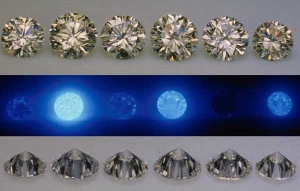
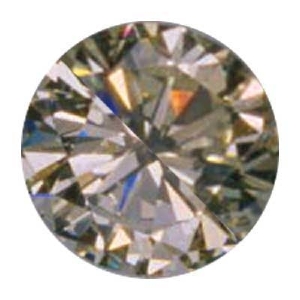
Rockdiamond|1460407478|4018049 said:michaelgem|1460344360|4017807 said:pfunk|1458674568|4009492 said:Michael, as I read your paper I have a couple more questions for you. I am personally more experienced with reading medical journals (more specifically pharmaceutical research) and am accustomed to finding the "limitations" section at the end. I am curious as to whether you formulated a list of limitations and what that list may look like?
As a reader, the first question I am asking myself is what are your credentials and training as a diamond grader?
What sort of master set of stones did you use for your grading of these 25 stones?
Was the selection of diamonds to be used done at random and why only 25 stones?
Were the specified light sources the ONLY source of light in the room at the time of grading?
I hope you don't take these questions as an indication of me trying to poke holes in your study. They are very real questions I would like to know in order to evaluate the study. I happen to come into this discussion feeling like a UV filter should be used for diamond grading and don't see why the use of a filter would be detrimental to the consumer. If UV light is causing a chameleon effect on stones that is dependent upon the lighting it should be eliminated as a variable, especially considering that we don't know why certain fluorescing stones behave one way and others seem to behave another way.
This post by pfunk encompasses most all questions asked about my color grading methodology, limitations and skill asked over many pages by everyone including Sharon, Garry, David and Karl. So this response is to and for everyone who asked.
As a reader, the first question I am asking myself is what are your credentials and training as a diamond grader?
Credentials and training in diamond grading are a subset of gemology credentials. In the US there are two main avenues to a credential in gemology. One is the Diploma Course and examination to obtain the designation FGA (Fellow of the Gemmological Association of Great Britain). The other is the more widely held (in the US) Diploma course and examination to obtain the credential GG ( Graduate Gemologist) at GIA. It is generally acknowledged in the appraisal community that the FGA program is more academically rigorous and challenging, but in the field of diamond grading GIA is the acknowledged leader and their diamond course superior.
My gemology diploma is FGA, and I own and have researched all four generations of GIA Graduate Gemologist courses from the 60's to the present. I hold the certification by the Accredited Gemologist Association, Certified Gemological Laboratory(CGL) and am a Senior Member of that Association. Senior Member status with the National Association of Jewelry Appraisers was attained after years of continuing education in the fields of gemology and appraising.
What sort of master set of stones did you use for your grading of these 25 stones?
I employed my 10 stone set of quarter carat to three-eighth carat masters built during the 80's by sending stones to GIA where their top color grader (now retired) Karen Hurwit graded them as Masters. I also had access to and employed what I believe for several reasons to be the best 10 stone master set Karen ever put together. That set of Lazar Kaplin Ideal cut diamond masters was made for diamond dealer and CZ master manufacturer Barry Ellin. Here is a photo of that master stone set of nine, whole-grade master diamonds from E to L and N from my article "A place for CZ masters in diamond colour grading" in the Journal of Gemmology / 2008 / Volume 31 / No. 3/4.
For those interested in greater depth of understanding of color grading this article:
( http://acagemlab.com/temp/CowingCZ.pdf ) goes way beyond a "Consumer's Report" style evaluation of the two major CZ master sets available and widely in use in the US.
Findings are reported of studies in five areas related to diamond color grading:
1. The historical development by the Gemological Institute of America (GIA) of a color grading standard beginning with the GIA color grading ‘yardstick’.
2. Industry and GIA teaching of methods and recommendations for color grading using GIA Diamond Masters, which reduce the subjectivity of color grading.
3. The pros and cons in the use of CZ master stones in diamond color grading.
4. A study of grading light environments using five lighting types that resulted in additional recommendations for color grading using diamond or CZ master stones.
Was the selection of diamonds to be used done at random and why only 25 stones?
For the Medium, Strong and Very Strong Blues, the 25 diamond database was made up of the first five stones of each strength having post-2000 GIA grading reports that I was able to obtain. The faint and none used as a control were likewise randomly obtained, most with GIA grading reports. Antoinette Matlins happened fortuitously to have the VST Blue cushion #5 that turned out to be the true blue-white top color diamond historically called Jager.
Were the specified light sources the ONLY source of light in the room at the time of grading?
Grading was done in each light in an otherwise relatively dark room.
Finally, remember the grading in GIA DiamondDock standard lighting is by GIA GTL, and AGSL as well as me. As Bryan has pointed out, all three agree within tolerance on the grades of the study's 10 non-fluoresent control diamonds. This close correlation in grading supports the grading skill and consistency of all three. It is only as the strength of the diamond's fluorescence goes from medium to strong to very strong blue that differences and inconsistencies arise and worsen.
Michael, thanks for posting this- but haven't we moved past the point in the discussion regarding GIA and systematic overgrading of MB/SB stones?
It's not happening and there's been no credible evidence shown to substantiate the claim.
Let's agree you saw a stone as a J color that GIA saw as a G and AGSL saw as an H.
Maybe it was an anomaly. Maybe the methods you used produced an errant result- but it's important to make sure this part is clear.
It's possible to find errors in GIA grades- but they are quite rare and indicate no systematic problem
Carefull, the ghosts of Frank Wade and GIA founder Robert Shipley as well as past GIA graduate gemologistare are likely to rise out of their graves and haunt you repeating over and over again " Fluorescent diamonds should be graded at their color in artificial light devoid of ultraviolet radiation, rather than at their daylight appearance."
Remember, the overgrading and inconsistency problem that is clearly documented in the 2010 Study remains even after the GIA switched to the DiamondDock, and was reinforced by studies in Israel by Tom Tashey and the World Gemological Institute (WGI), an international diamond grading and research center of the Israel Diamond Institute (IDI).
Using the DiamondDock with and without UV filter, he and the Israeli graders did not find much difference or improvement from the DiamondLite to the DiamondDock. They found less improvement than the 2010 study's finding of reduction in overgrading from four grades of fluorescence enhancement in the DiamondLite to two grades in the DiamondDock in 3 of the 5 VST Blues.





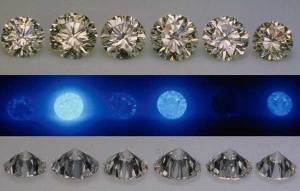
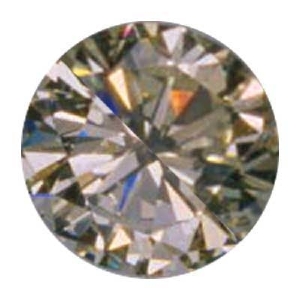

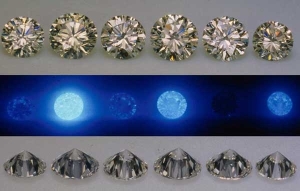
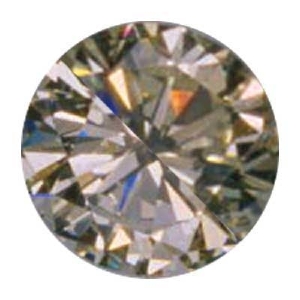

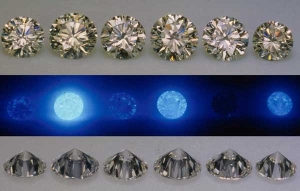
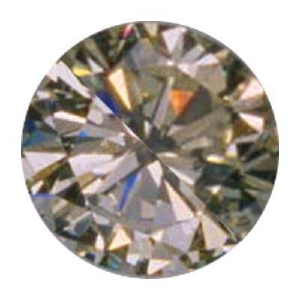
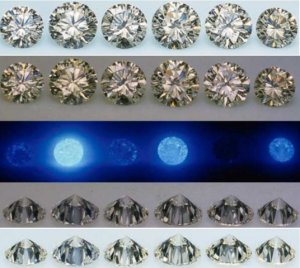
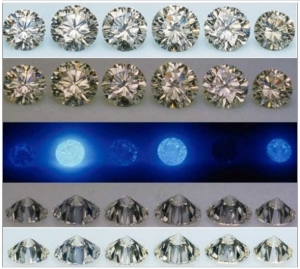
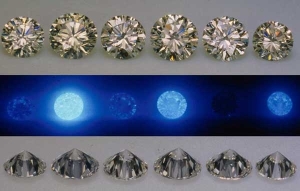
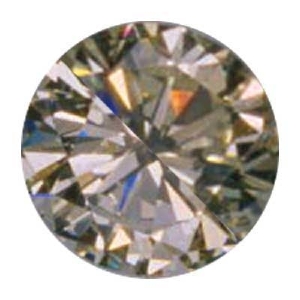
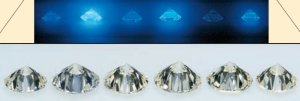


300x240.png)